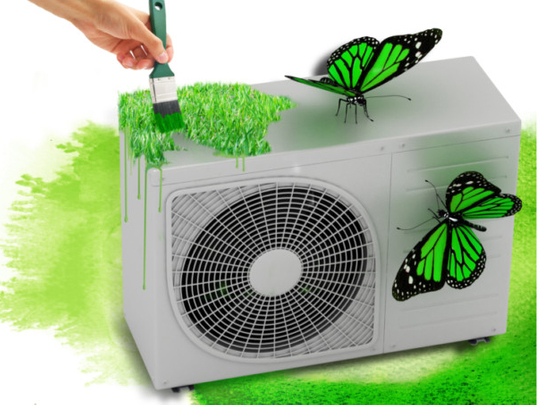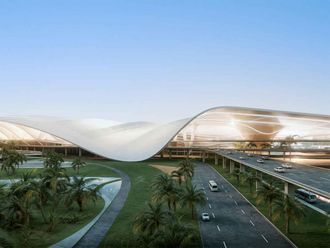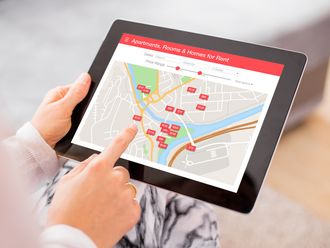
Did you know that industry watchdogs have released a document outlining what they call the seven sins of greenwash? Creating an only slightly misleading advertising campaign within legal limits is all in a day’s work for marketers, and it is up to you as the buyer to recognise half-truths and take them with a pinch of salt. However, this is easier said than done. “It is very rare for a marketer to sell an outright lie to you, or to commit what the document calls the sin of fibbing,” says Vivek Gilani, founder of the Mumbai-based non-governmental organisation NO2CO2.
Before you choose
Gilani says you could be greenwashed in a variety of ways. Foremost is the sin of a hidden truth where the marketer suggests that a product is green according to a narrow set of attributes, without attention to other important environmental issues. For instance, there is a process to be followed before zeroing in on a product that can help reduce your carbon footprint.
Markus Oberlin, CEO of Dubai-based facilities management company, Farnek, says, “Especially if you are planning this for an entire building or a sprawling home or a very large office space, effective analysis of the heat load of the building on the basis of its geographic location, building envelope and the utility of its areas is the first step, followed by proper zoning to ensure that spaces operating in a similar fashion are grouped.” Only then, he says, should a product be chosen. The choices are chillers, packaged type air conditioners and split or window air conditioners.
“Split air conditioners remain the most common for use in homes,” says Gilani.
Reality check
Gilani further highlights the sins of no proof — for instance when companies tell you that they post-recycle air conditioners. He also elaborates on the sin of vagueness where the most common example is the use of the words all natural, which buyers take for eco-friendly and the sin of false labels where through either words or images, the product gives the impression of third-party endorsement, where no such endorsement exists. Of course, all the information regarding these products features in technical papers regarding their energy-efficient features but it would be difficult for the common man to comprehend these.
Certified quality
“Buyers can look for national or international certifications in the products that declare the claims of the manufacturer, such as Seasonal Energy Efficiency Ratio and Energy Star Rating for window, split and packaging air-conditioning units,” says Oberlin. Similarly, in the case of chillers, one could compare the KW/tonne offered by different products. Sasikumar Thayyil, SBU Head, Al Futtaim Electronics — Toshiba, suggests checking a products Energy Efficiency Ratio (EER).
Buyers can also look to identify products that offer constant updates on consumption. Giving an example from within Toshiba’s portfolio, Thayyil says, “Our Variable Refrigerant Flow (VRF) range comes with smart controls that allow monitoring of electrical power consumption and even the amount of CO2 emissions saved,” he says.
Two of the most common greenwash moves in air conditioning are the sin of irrelevance, where the claim is truthful but is unimportant to buyers seeking environmentally preferable products and the sin of the lesser of two evils where the claim may be true within the product category, but that risks distracting the consumer from the greater environmental impact of the category as a whole. For instance, many manufacturers will tell you that their product is chlorofluorocarbon (CFC)-free but the fact is that CFCs are banned by law and have now been replaced by hydroflurocarbons.
“The use of CFC refrigerants has been phased out and a timeline exists to also end the use of the R-22 refrigerant. Buyers must ensure that the system being installed uses environment-friendly refrigerants such as R-134a, R-401,” says Oberlin.
UK-based heating, ventilation and air conditioning (HVAC) consultant and innovator and creator of several sustainable cooling systems, Nicholas Coxx, says, “The use of CFCs and HFCs are witnessing rapid phase down. This will cause problems for Dubai if it simply follows the West. There are also technical difficulties resulting from Dubai’s higher ambient temperatures.”
Thayyil puts it in perspective. “An air conditioner’s impact on the environment is 99 per cent indirect — which can be mitigated by choosing higher EER — and 1 per cent direct, which can be controlled by the refrigerant that the system uses. Country-specific regulations govern the use of refrigerants. Most developed nations already have laws in place but developing nations are upgrading laws to mitigate this issue.”
He adds that digital inverter units, in comparison to their fixed speed counterparts, result in 30-40 per cent less energy consumption as the system continuously changes the compressor revolution speed, lowering temperatures faster and reducing speed once the room is cooled, thus saving energy. All inverter VRFs, in comparison to conventional ducted and package systems, offer similar savings.” Toshiba’s data points to 60 per cent of global demand shifting towards inverter technology by the end of 2013.
Roadblocks
A host of obstacles stand in the way of natural refrigerants. Gilani says that there is resistance to the paradigm shift from HFCs to natural refrigerants because it would mean a huge change in the whole product manufacturing process. The official explanation doing the rounds, however, is that natural refrigerants — or R-gases — are flammable. Gilani, however, assures that guidelines governing the use of natural refrigerants put restrictions on the amount of gas that can be used in a given air-conditioning system based on the space that it is intended to cool. “This ensures that even in the event of a leakage plus an existing source of fire, the volume of gas remains too small to cause an explosion in your home,” he says.
Internationally, some companies manufacturing these air conditioners include Godrej & Boyce in India; Bundgaard Køleteknik, Denmark; TCL DeLonghi Home Appliances, China; Frigadon, Sweden; Mayekawa and Toshiba in Japan; and Benson, Australia. Toshiba is also an option for buyers in the UAE.
“Our Super Digital Inverter series and All Inverter VRF units combine the inverter technology with hybrid rotary compressors and uses R410a, which provides better efficiency than its predecessor R22,” says Thayyil.
As with everything sustainable today, the higher cost of natural refrigerant air conditioners acts as an obstacle.
“However, the payback time – by way of energy saving — is two years and if you purchase from an energy service company, there are innovative payment plans where the buyer may not need to make an upfront payment, or pays as much as he had earmarked for a regular air conditioner,” says Gilani.
Similarly, Thayyil says, “High-energy savings result in a quick, three-year payback period for digital inverter units. You save a lot during the air conditioner’s 13-14 year life cycle.” He explains that as demand grows and manufacturers benefit from economies of scale, prices will reduce too. ■












